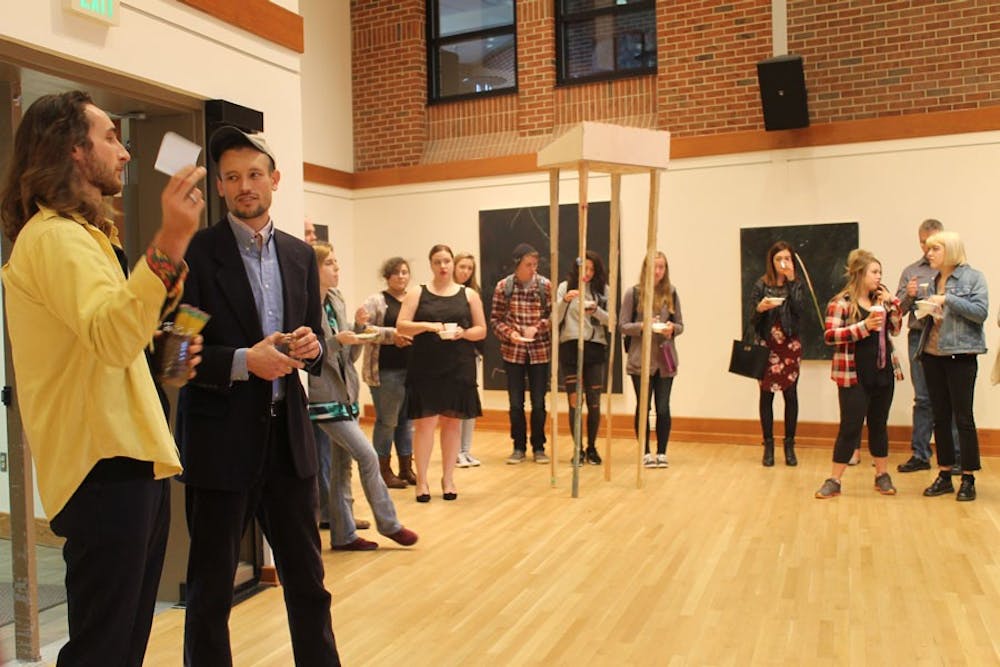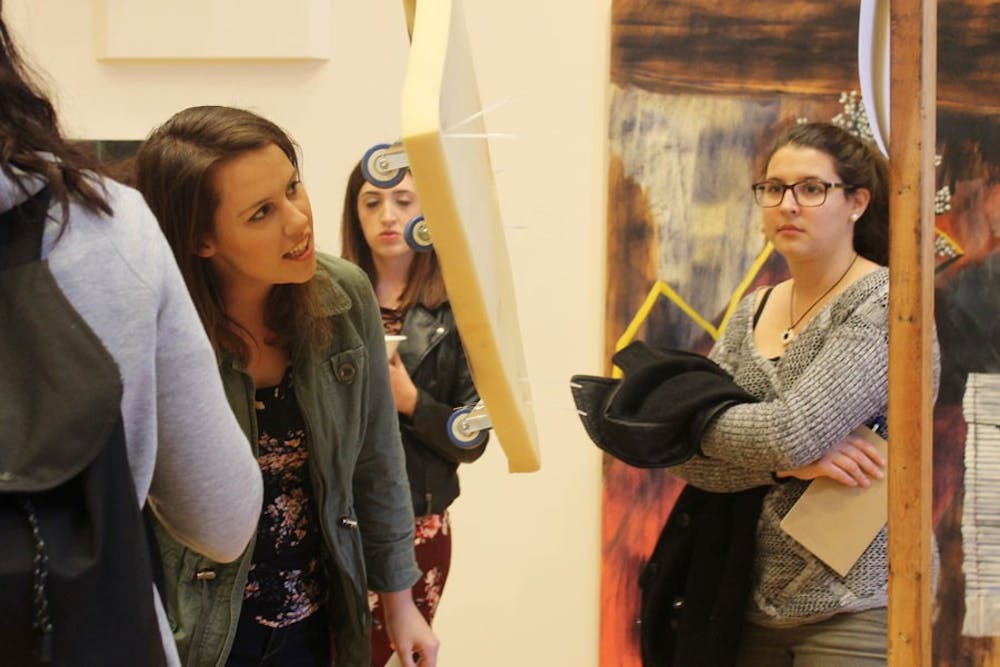
By Chrishauna Curry | Contributor
On Friday, Nov. 11, Joshua Cave and James Hapke held their opening reception and art talk for their exhibition "Are We Having Fun Yet?" in the Metcalf Gallery.
Hapke, a painter from New York City, and Cave, a sculptor from Chicago, flew to Taylor to give art majors and minors three consecutive days of art talks and encouragement. Their artwork is currently displayed in the Metcalf Gallery, where it will remain until Dec. 9.
Assistant Professor of Art Suzie Dittenber said it is revitalizing and energizing to be exposed to new artwork. Cave and Hapke were appropriate role models for the art majors as they incorporated playful, yet serious, qualities in their work.
"Art can be so many things," Dittenber said. "You should be open to exploration."
Cave and Hapke conducted an art talk shortly after the opening of the exhibit, which consisted of humorous rounds of Jeopardy and questions from the audience. They discussed who and what inspires them to do their art. Cave said artists Enrique Martinez Celaya and Erwin Wurm inspired him as an artist: Enrique for his discernment of the way artists should use color, and Erwin simply for his choice of shoes.
Hapke expressed that music helps put him in his "zone." The melodies help him separate his intellectual process from his physical process. Listening to music prevents his mind from wandering. In contrast, he believes a lot of ideas also come with peace and rest. Hapke said artists should reflect and slow down before taking part in their work.
"Great artwork should practice sensitivity," Hapke said.
Hapke and Cave talked about the setbacks of creating their exhibition such as the expenses of art materials and struggles of distractions. They suggested easy solutions like recycling to find original and inexpensive materials.
Hapke briefly discussed the true meaning of art by explaining art should make viewers feel something. The creators agreed that art came with intuition and thinking yet separated both concepts. In other words, there should be balance between cognition and instinct.
"You pray that (your art) has its own sense of soul," Hapke said.
Hapke enjoys the intimacy of admiring objects at a microscopic level. He then looks at the bigger, macro-level picture. His sculpture of a rickety table exemplifies this concept. From far away, the tall table seems unstable, ready to fall with any small disturbance. At closer inspection, the wooden crevices hold tiny, colorful, foam balls. His magnifying glass sculpture also shows this micro and macro relationship. He looks at the sculpture as a heightened level of awareness, which is very important to him.
On the first day of the artists' visit, Hapke and Cave gathered to critique art majors' work and give them advice on how to improve their craft and find inspiration.
The next day, Cave, along with Ned Shalanski, a landscape architect and artist, conducted a career talk about dealing with the challenges and possibilities in art professions.
After three days of interacting with the artists, Dittenber feels as if the exhibit and art show were a success.





